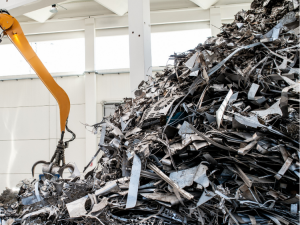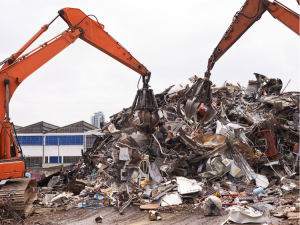
Miller on Scrap: More malaise, or will tariffs lead to higher prices?
If we review the price trends for the last two years, we can see this year’s pattern following a similar path.


If we review the price trends for the last two years, we can see this year’s pattern following a similar path.

The US scrap market has traded sideways from May prices in basically one day without any significant descent, sources say. All major steelmakers, with maybe one exception, issued orders at prices paid in May.

How is the ferroalloys market in the US faring with the new tariffs.

How have tariff revelations affected the June market?

The US mills have managed to reduce pig iron prices to correspond with the sharp declines in domestic scrap prices in May.

Ferrous scrap outlook for June appears on the upswing.

An update on the ferrous scrap market.

A look at the latest developments in the ferrous scrap export market.

The price spread between hot-rolled coil (HRC) and prime scrap narrowed again in May, according to SMU’s most recent pricing data.

Since the US ferrous scrap settlements for May have been finalized, steelmakers are turning their attention to continued pig iron flows with the wind behind their backs.

The US ferrous scrap market for May shipment has basically settled, with the primes grades of #1 Busheling and bundles falling around $30 per gross ton (gt) from April levels. The obsolescent grades of HMS, shredded and plate and structural declined by $40/gt across several regions.

Given the news about tariffs and bringing back industries to the US, a brief look back in time may show how our economy changes with technological advances and the shifting economies of scale.

The US scrap market should start to form next week, and the outlook is for another drop in the delivered cost of material.

Can technology help with pig iron and DRI/HBI tariffs?

The domestic ferrous scrap market in the US is generally regarded as under downward pressure.

The pig iron markets have been quiet for the last several weeks, as tariff implementation on imports into the US became a reality. There has been debate on which party will have to pay the tariff. A recent transaction could provide the answer to that question.

The ferrous scrap export market has been thinly traded thus far in April in the Atlantic Basin.

There are several other tariffs implications concerning the ferrous raw materials sector. In addition to tariffs on DRI/HBI imports, there will be also be a tariff on raw materials imported to domestically based metallics producers.

The price spread between hot-rolled coil (HRC) and prime scrap narrowed in April after widening since January, according to SMU’s most recent pricing data.

US scrap prices declined in April for all the grades tracked by SMU amid tariff uncertainty, according to market sources.

The imposition of reciprocal tariffs by President Trump as explained on Wednesday afternoon has rattled virtually every market. This policy has some advantages for the steelmaking sector, but there may be some disadvantages that were not considered, especially for the EAF producers of flat-rolled.

Last week, much attention was focused on President Trump’s “Liberation Day” tariffs and rightly so. They have thrown a big wrench into the market-reading business. Whether you are for them or against them, the potential outcomes are hazy, at best. Maybe we should not forget the basics, tariffs concerns notwithstanding. The basics of this ferrous […]

The price of pig iron for the US market remains firm despite a potential drop in domestic ferrous scrap prices going into April.

The US ferrous scrap market rise this year is showing signs of slowing down as US steelmakers adjust production in line with slower automotive production and sales. But President Trump's announcement of 25% auto tariffs could change things very fast.

The export situation from the US East Coast was interrupted last week after a political event in Turkey.

The US scrap market is in for another unpredictable ride going into April. Questionable scrap flows, extended winter weather, and implications of tariffs on steel and scrap continue to have an impact.

The HRC vs. prime scrap spread increased again in March.

The US Trade Representative (USTR) has drafted a proposal targeting the Chinese shipbuilding industry by setting elevated port fees for any maritime shipping company associated with Chinese-built vessels.

“The next months are going to be good ones for pig iron producers," according to one source.

After an unusually long period of waiting for the March scrap market settlements, several mills are now actively buying ferrous scrap. And it looks like prices are ticking up.